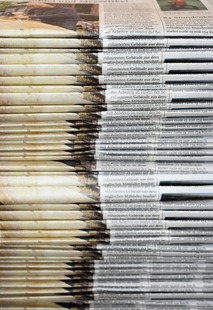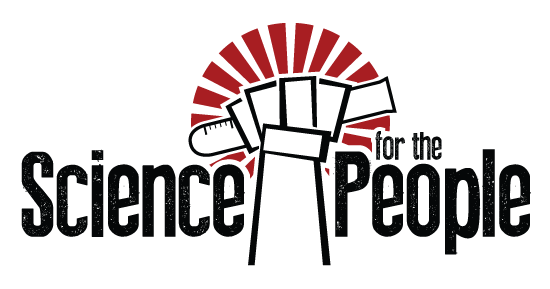2019, But Make It Science #546
January 04, 2020

Image from Waldemar Brandt Follow Message
It's 2020, but we're looking back. What were the biggest science stories of 2019? Well, it was a big year for lots of things. Black hole pictures, vaping illnesses... and lots and lots of climate change news. Come on a trip down memory lane with us and the writers at Science News magazine as we take a look back at some of the top science stories of the last year.
Related links:
- Most Americans now see signs of climate change where they live
- Countries urgently need to ramp up emissions cuts to meet climate targets
- IPCC report warns of a bleak future for oceans and frozen regions under climate change
- Is climate change causing Europe’s intense heat? A scientist weighs in
- Europe’s latest heat wave has been linked to climate change
- Planting trees could buy more time to fight climate change than thought
- CO2 emissions are on track to take us beyond 1.5 degrees of global warming
- How scientists took the first picture of a black hole
- The M87 black hole image showed the best way to measure black hole masses
- The first picture of a black hole opens a new era of astrophysics
- 2019 brought us the first image of a black hole. A movie may be next
- Trends in Reported Marijuana Vaping Among US Adolescents, 2017-2019
- Hospitalizations highlight potential dangers of e-cigs to teens’ lungs
- An Illinois patient’s death may be the first in the U.S. tied to vaping
- Nearly 1,300 injuries and 29 deaths in the U.S. have been tied to vaping
- Vaping may have sent 153 people to hospitals with severe lung injuries
- Vaping-related illness reports have surged to 805 from 46 U.S. states
- Vitamin E acetate is a culprit in the deadly vaping outbreak, the CDC says
- Vaping is suspected in a fifth death and hundreds of injuries
- 1 in 4 U.S. high school seniors has vaped recently — up 4.5 percentage points from 2018
- Rumors hint that Google has accomplished quantum supremacy
- Google officially lays claim to quantum supremacy
- 1 million species are under threat. Here are 5 ways we speed up extinctions
- Brazil’s Amazon has burned this badly before. This year’s fires are still bad
- We’ve lost 3 billion birds since 1970 in North America
Guests:
- Carolyn Gramling
- Emily Conover
- Aimee Cunningham
- Susan Milius
Guest Bios
Carolyn Gramling
Carolyn Gramling is the Earth & Climate writer at Science News. Previously she worked at Science magazine for six years, both as a reporter covering paleontology and polar science and as the editor of the news in brief section. Before that she was a reporter and editor at EARTH magazine. She has bachelor’s degrees in Geology and European History and a Ph.D. in marine geochemistry from MIT and the Woods Hole Oceanographic Institution.
Emily Conover
Physics writer Emily Conover joined Science News in 2016. She has a Ph.D. in physics from the University of Chicago, where she studied the weird ways of neutrinos, tiny elementary particles that can zip straight through the Earth. She got her first taste of science writing as a AAAS Mass Media Fellow for the Milwaukee Journal Sentinel. She has previously written for Science Magazine and the American Physical Society. She is a two-time winner of the D.C. Science Writers’ Association Newsbrief award.
Aimee Cunningham
Biomedical writer Aimee Cunningham is on her second tour at Science News. From 2005 to 2007, she covered chemistry, environmental science, biology and materials science for Science News. Between stints Aimee was a freelance writer for outlets such as NPR and Scientific American Mind. She has a degree in English from the University of Michigan and a master's degree in science journalism from New York University. She received the 2019 Award for Excellence in Science and Medical Journalism from the Endocrine Society for the article "Hormone replacement makes sense for some menopausal women".
Susan Milius
Life sciences writer Susan Milius has been writing about botany, zoology and ecology for Science News since the last millennium. She worked at diverse publications before breaking into science writing and editing. After stints on the staffs of The Scientist, Science, International Wildlife and United Press International, she joined Science News. Three of Susan's articles have been selected to appear in editions of The Best American Science Writing.


















